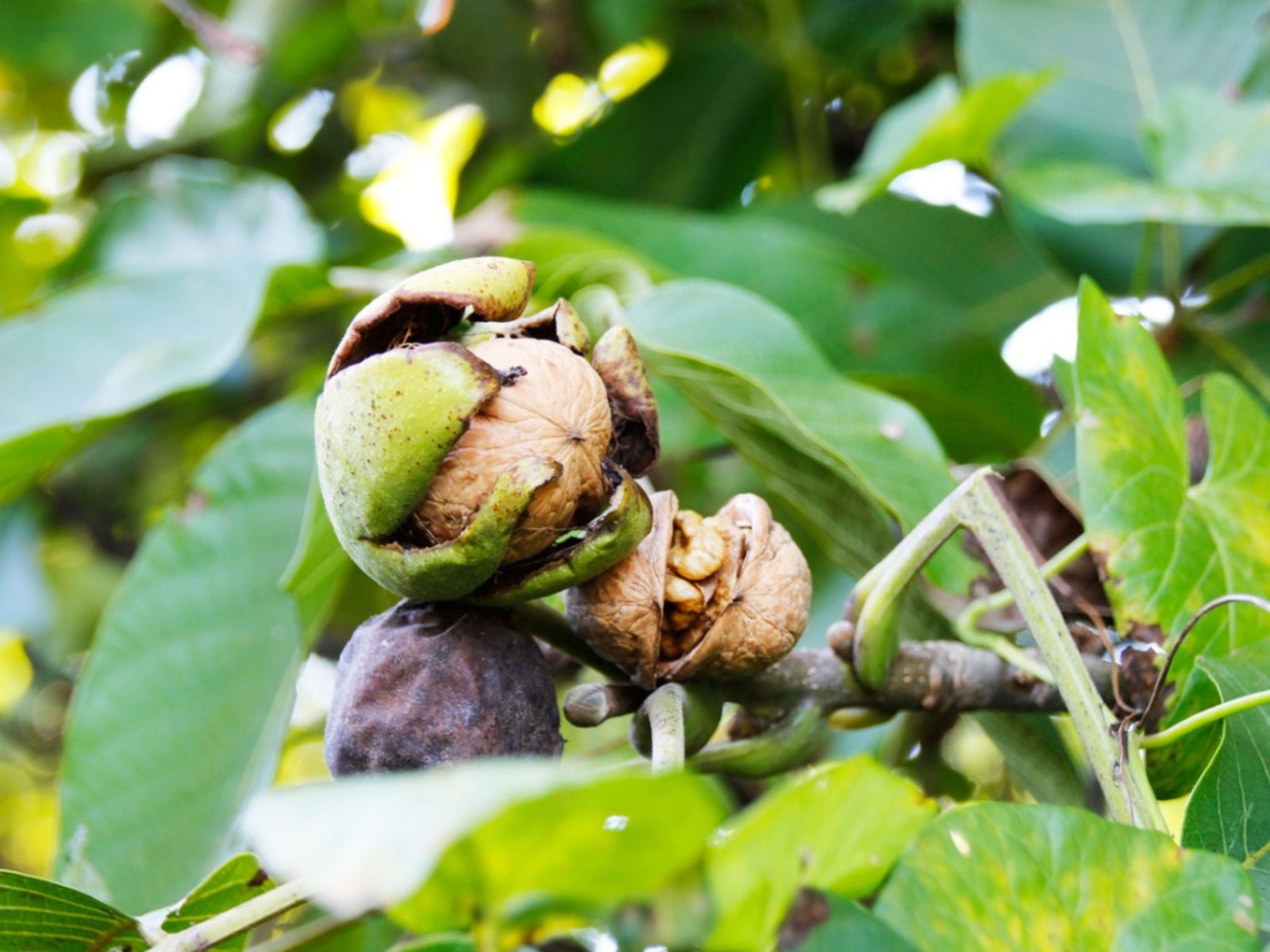Planting Walnut Trees: Tips and Information On Growing Walnuts

Walnut trees produce not only a delicious, nutritious nut but are used for their wood for fine furniture. These beautiful trees also provide shade in the landscape with their large, arching limbs.
How to Grow a Walnut Tree
Most growing walnut trees attain heights of 50 feet (15 m.) with an equivalent width and can be found throughout the United States. The English or Persian and black walnuts are the most common, used for nut production as well as shade trees. A mature tree will produce 50 to 80 pounds (23-36 kg.) of nuts yearly. The Persian walnut is grown in California and is prized for its large nuts. There are several cultivars such as:
- Hartley
- Chandler
- Serr
- Vina
- Ashley
- Tehama
- Pedro
- Sunland
- Howard
All leaf out late in the spring, thus avoiding walnut blight. Persian walnuts are adapted to Mediterranean climates with mild winters and are not suitable for some areas. Cold hardy cultivars of the Juglandaceae family include:
- Cascade
- Butternut
- Heartnut (Can be grown in the Pacific Northwest or the mid-Atlantic and southeastern United States and are known as Carpathian type.)
Choose a variety suited to your climate. Growing walnuts require 140 to 150 days with temperatures over 27 to 29 F. (-2 to -6 C.) for the earliest ripening varieties.
Planting Walnut Trees
Once you have made your selection, it's now time for planting the walnut tree. Till a 12 square foot area down to the depth of at least 10 inches (25 cm.) to remove any grass, weeds or other plants that compete for the new trees water and nutrients. Then, dig a hole 1 to 2 inches (2.5-5 cm.) larger than the walnut seedling's root ball. Put the seedling in the hole to the same depth as the pot or bury the roots 1 to 2 inches below the soil. Fill in the hole and tamp down to eliminate any air pocket around the roots. Water the tree in until moist, not soaked. Mulch the surrounding area with organic mulch, like wood chips, bark or sawdust, to retard weeds and maintain moisture. Keep the mulch 2 inches (5 cm.) away from your new tree.
Walnut Tree Care
Walnut trees have an extensive root system and as such do not need to be watered often -- only if the top 2 inches of soil have dried out. Prune any dead or damaged limbs as the tree matures; otherwise, there is no need to prune. Add mulch as needed each spring.
Harvesting Walnuts
Be patient. Walnut trees won't start producing nuts until they are about 10 years old, with peak production around 30 years old. How do you know when to start harvesting walnuts? Persian walnuts are harvested at the beginning of shuck split -- when the seed coat has turned a light tan in color. Depending upon the size of the tree, commercial producers use trunk or limb shakers and a windrow pushes the nuts into rows to be picked up by the sweeper. For the home grower, old fashioned shaking of branches and hand picking from the ground is probably the best method for harvesting walnuts. Nuts need to be dried by laying them out in a squirrel free area for a few days. Dried nuts can be stored for about four months at room temp or frozen for one to two years.
Sign up for the Gardening Know How newsletter today and receive a free copy of our e-book "How to Grow Delicious Tomatoes".

Amy Grant has been gardening for 30 years and writing for 15. A professional chef and caterer, Amy's area of expertise is culinary gardening.
